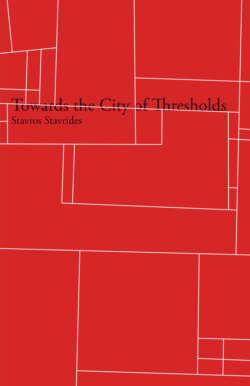Читать книгу Towards the City of Thresholds - Stavros Stavrides - Страница 12
На сайте Литреса книга снята с продажи.
Thresholds as social artifacts
ОглавлениеAs social constructions, different ways of defining and controlling space not only mirror different social relations and values but also shape them. Identities are not only sets of beliefs or ideas but are embedded in the social environment, influencing different practices and different ways of life, therefore producing material results. Studying different spatial arrangements as characteristics of specific societies one can discover not only the uses and meanings of space but also the logics of creating and sustaining different social identities.
Pierre Bourdieu observed that in societies lacking “the symbolic product-conserving techniques associated with literacy,” social dispositions “are inculcated through an interaction of inhabited space with the bodies of societies’ new members” (Bourdieu 1977, 89). Space then becomes a kind of “educating system” that creates what we have so far been referring to as social identities. But it is important to realize that such identities are the product of a socially regulated network of practices that weave again and again distinct characteristics.
So when Bourdieu studies the Kabyle house in 1960s Algeria, he does not study it as the material index of social symbols but rather as the sum of the possible practices that produce a world of values and meaning. The Kabyle house is a series of spatiotemporal conditions that define the meaningful movement of social bodies. The house endlessly teaches the body and is erected again and again as a universe of values by embodied performances.
To prove this double relation of the body with inhabited space in the creation of space’s symbolic attributes, Bourdieu chooses to observe the symbolic function of the house’s main door. This threshold is the point where two different worlds meet. The inside is a complete world belonging to a distinct family, and the outside is a public world where the fields, the pastures, and the common buildings of the community lie. The threshold acquires its meaning as a point of both contact and separation through the practices that cross it. These practices create the threshold as meaningful spatiotemporal experience, depending on who crosses it, under what conditions, and in which direction.
In Bourdieu’s example, men cross the threshold of the main door only to leave the house, to go to the fields where they belong, facing the light of daybreak as the door faces east. Women cross the main door only to enter the house facing the wall opposite the main door called the wall of light. Both men and women perform their acts “in accordance with the beneficent orientation, that is from west to east.” And this is possible, as Bourdieu demonstrates, because the threshold establishes a symbolic change of the orientation of the house; that is, in its relation to the outer space. The threshold then “is the site of a meeting of contraries as well as of a logical inversion and … as the necessary meeting-point and crossing point between the two spaces, defined in terms of socially qualified body movements, it is the place where the world is reversed” (Bourdieu 1992, 281–282).
As in the case of the Kabyle house, the spatiotemporal experience of the threshold is produced by this potential communication between two different opposing worlds. Existing only to be crossed, actually or virtually, the threshold is not a defining border that keeps out a hostile otherness, but a complicated social artifact that produces, through differently defined acts of crossing, different relations between sameness and otherness. If inside and outside communicate and mutually define each other, then the threshold can be considered as a mediating zone.
The anthropologist Victor Turner, following Arnold van Gennep, has described these in-between lands as possessing the status of liminality (from the Latin word limen = “threshold”). The condition of liminality is characterized by the construction of transitory identities. In Turner’s words, “liminal entities are neither here nor there; they are betwixt and between the positions assigned and arrayed by law, custom, convention and ceremonial” (Turner 1977, 95).
Every passage creates the conditions of a threshold experience that is essentially the suspension of a previous identity and the preparation for a new one. Passing through a threshold is an explicitly or implicitly symbolic act. It is, therefore, also a gesture towards otherness: not only spatial otherness, as in the case of emerging from a house into the outside world, but also temporal otherness, as in departing from the present for a more or less unknown future.
“Rites of passage,” as van Gennep has named them, accompany the passing of initiands from one social identity to another, and most of the times are connected with a ritually executed crossing of spatial thresholds (van Gennep 1960, 26). If this act of venturing towards otherness is performed in and through thresholds, couldn’t we assume that thresholds are the place of negotiation with otherness? Thresholds can be the schematic system through which societies symbolically construct this experience of negotiation and, at the same time, materially allow the negotiation of identity to take place.
